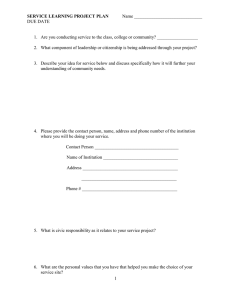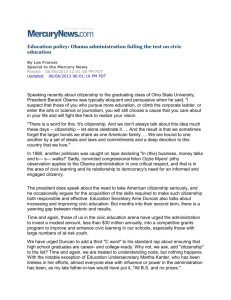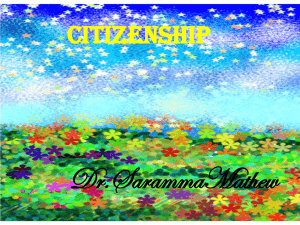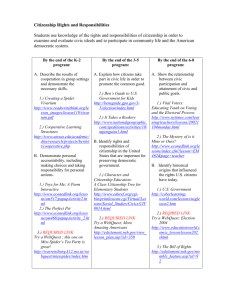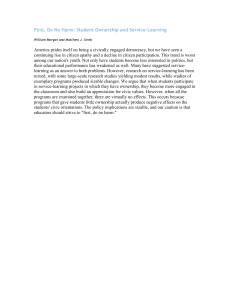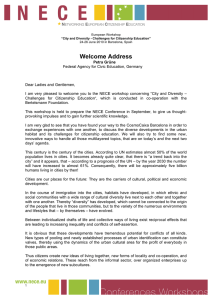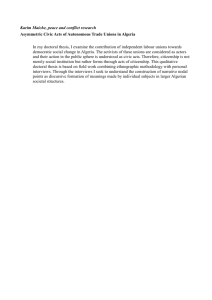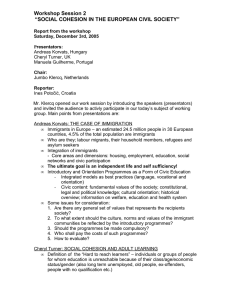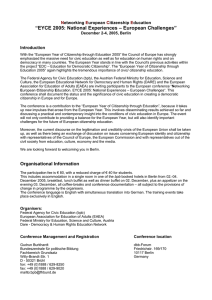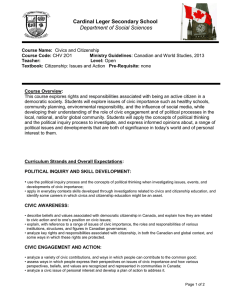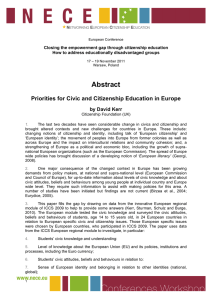Developing a Model for Service & Civic Engagement
advertisement
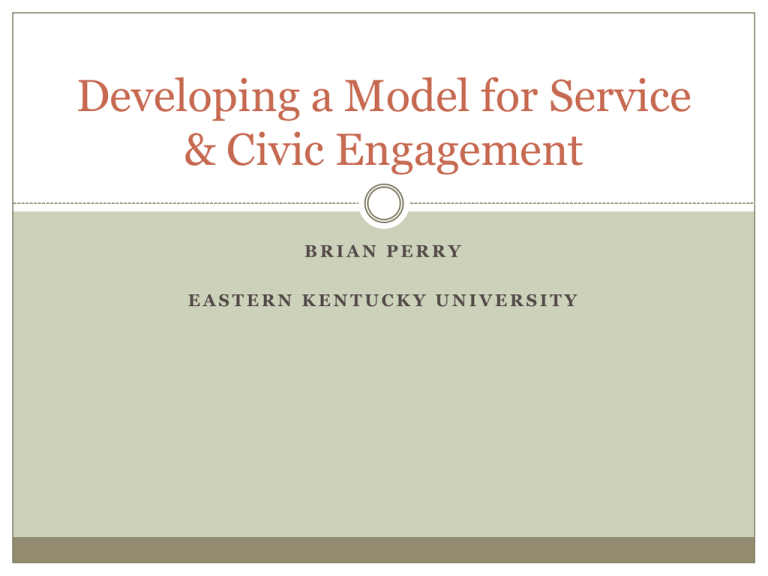
Developing a Model for Service & Civic Engagement BRIAN PERRY EASTERN KENTUCKY UNIVERSITY BACKGROUND EKU Civic Engagement Offices Regional Stewardship Service Learning Community Service (Student Life) Community Service 4+ years Variety of Initiatives Local projects, Alternative Break Program, Social Justice Film Series The ‘Hub’ for active citizenship on campus THE QUESTION(S) / PROBLEM What’s our purpose? Active Citizenship! How do we know that students are becoming civically engaged? What is the (theoretical) basis for our programming? How do we program for students at different levels of engagement? How do we assess the programs? THE FOUNDATION: Generational Broadly Rise of service-learning in K-12 In the 20 year period from 1979 to 1999, the number of secondary schools implementing service-learning jumped from 15% to 46% (Spring, Grimm, & Dietz, 2008) The ‘9-11 Generation’ THE FOUNDATION: Theory Theory Swartz’s (1977) model of altruistic helping behaviors The model has four cognitive and affective phases, comprised of eight steps, through which a person progresses, beginning with a recognition of need and ending with overt behaviors. Active Citizenship Continuum developed by Breakaway Shiarella, McCarthy, and Tucker (2000) Community Service Attitudes Scale (CSAS) Swartz’s (1977) Model Phase 1. Activation steps: Perception of a need to respond. Awareness that others are in need. Perception that there are Actions that could relive the need. Recognition of one’s own Ability to do something to provide help. Feeling a sense of responsibility to become involved based on a sense of Connectedness with the community or the people in need. Phase 2. Obligation step: Moral obligation to respond. Feeling a moral obligation to help generated through (a) personal or situational Norms to help and (b) Empathy. Phase 3. Defense steps: Reassessment of potential responses. Assessment of (a) Costs and (b) probable outcomes (Benefits) of helping Reassessment and redefinition of the situation by denial of the reality and Seriousness of the need and the responsibility to respond. Phase 4. Response step: Engage in helping behavior. Intention to engage in community service or not. Active Citizenship Continuum THE MODEL LEVEL 1 Programming Programming at this level is aimed at getting students involved and interested in civic engagement and social issues, possibly for the first time. LEVEL 1 Programming con’t Opportunities to learn: about needs in the community why civic engagement is necessary in meeting these needs that actions can meet those needs that their actions can, in fact, help a sense of responsibility to become involved based on a sense of connectedness with the community or those in need. Examples: Volunteer Fair Episodic service projects Philanthropy drives Educational events National Days of Service LEVEL 2 Programming Programming at this level is aimed at educating regular volunteers about social issues. It’s programming that pushes participants to ask why a service is needed, what are the root causes. LEVEL 2 Programming Con’t Opportunities to become more involved in service projects. On-going projects Developing relationships with community partners Opportunities to take on leadership roles Examples: Alternative Breaks (as participants) Social Justice Film Series Speakers/Panel Discussions Service Council LEVEL 3 Programming Programming at this level is targeted at socially active students that are beginning to make civic engagement a priority expressed through their values and life choices. Leadership development is a high priority. LEVEL 3 Programming Con’t Opportunities to: become a leader on campus engage other students in service; leading by example learn how individual choices impact the world around them learn how to make socially responsible choices in their daily lives Examples: Alternative Break Citizenship schools Community Service Intern Alt Break Site Leaders Alternative Break Board
